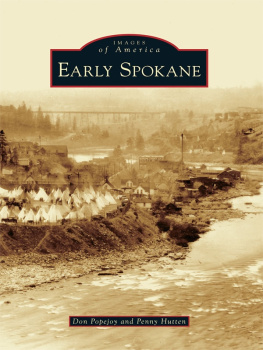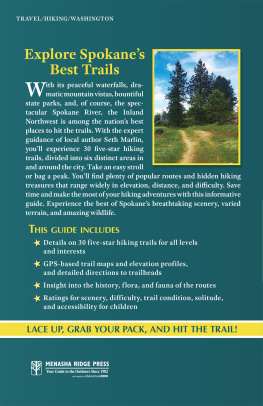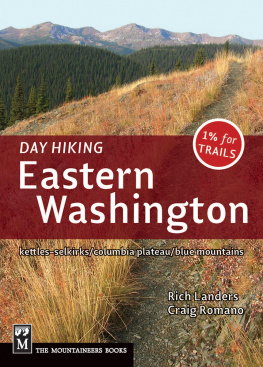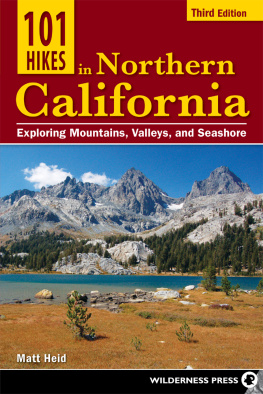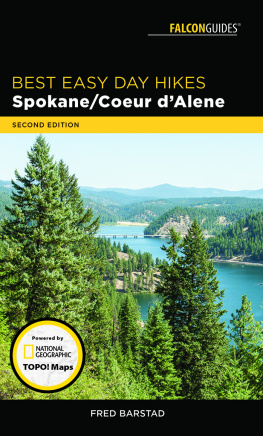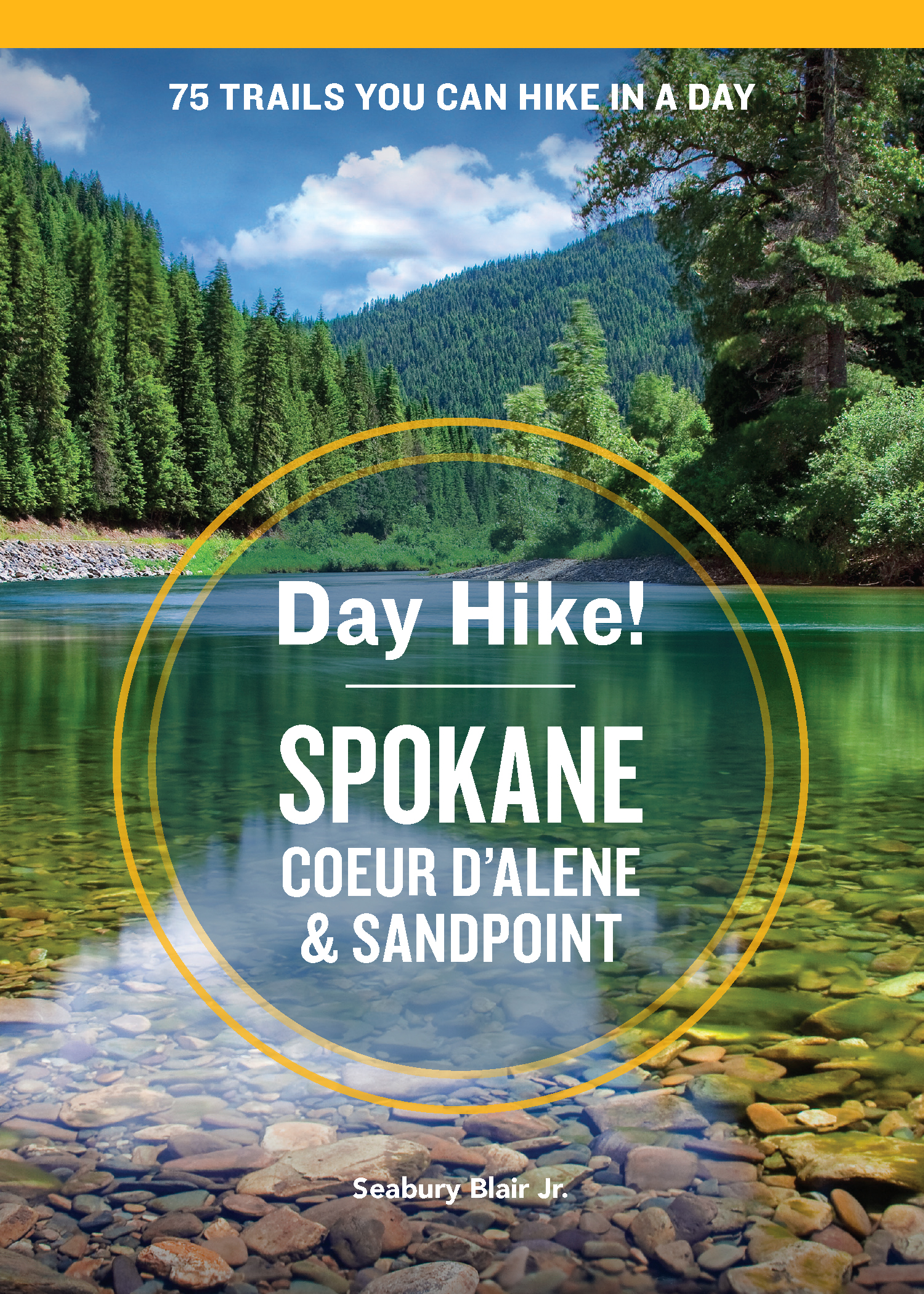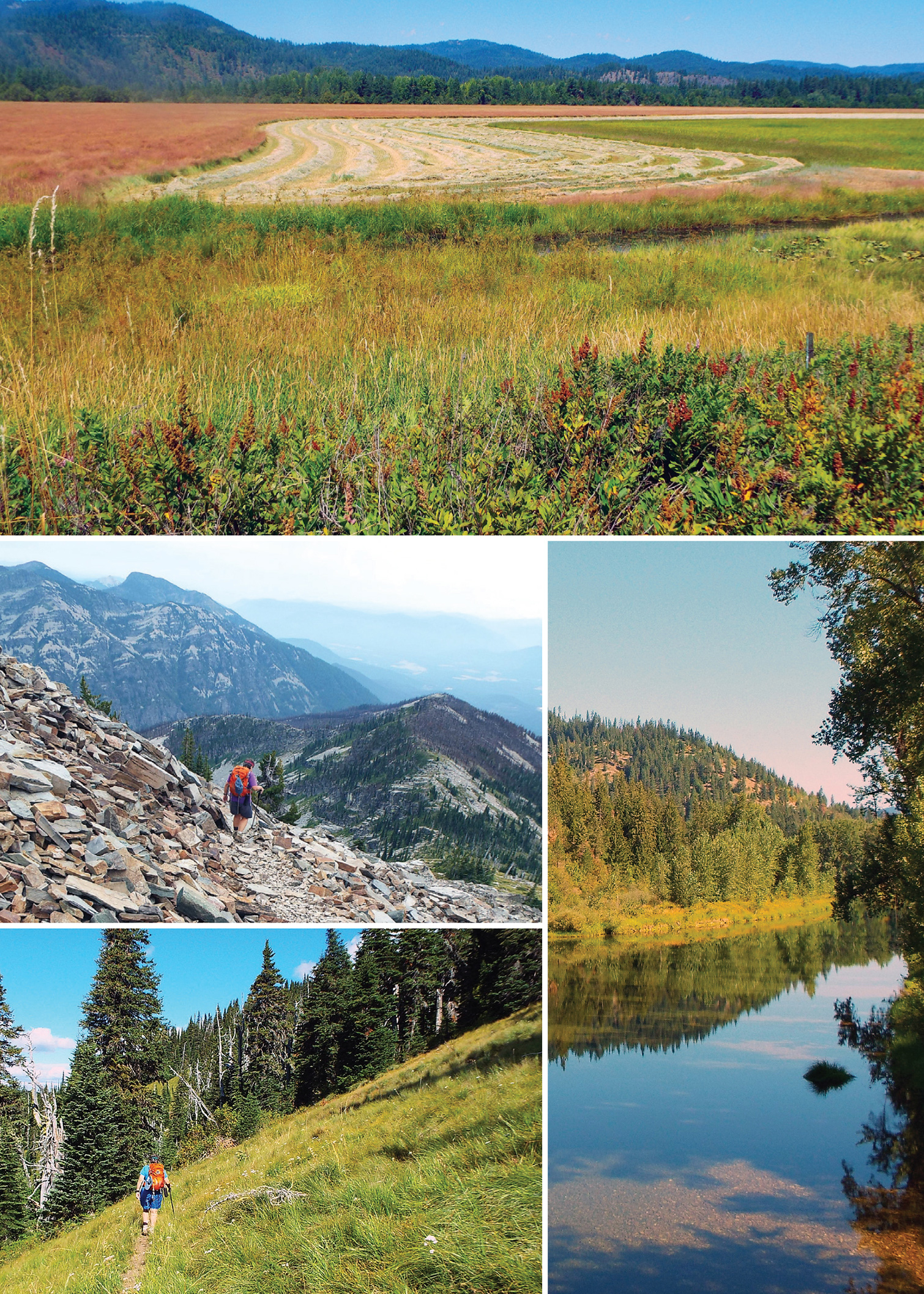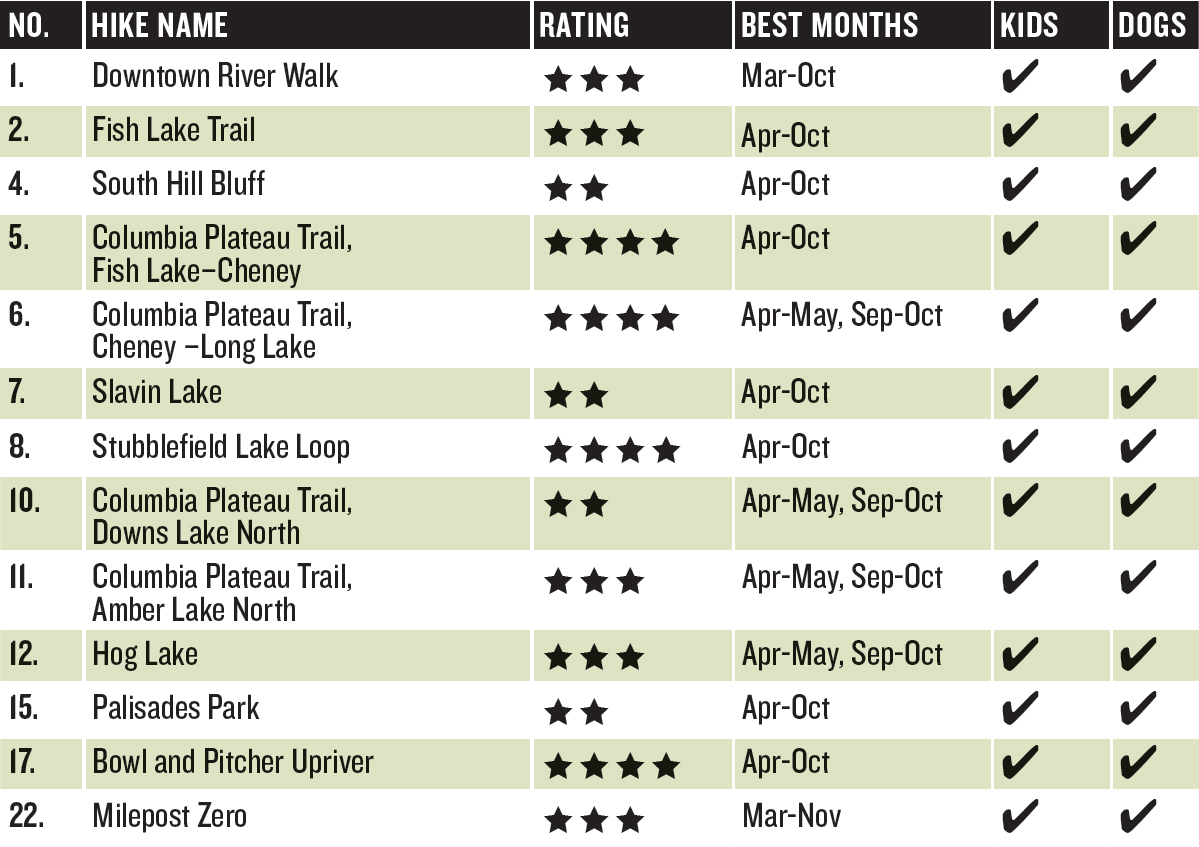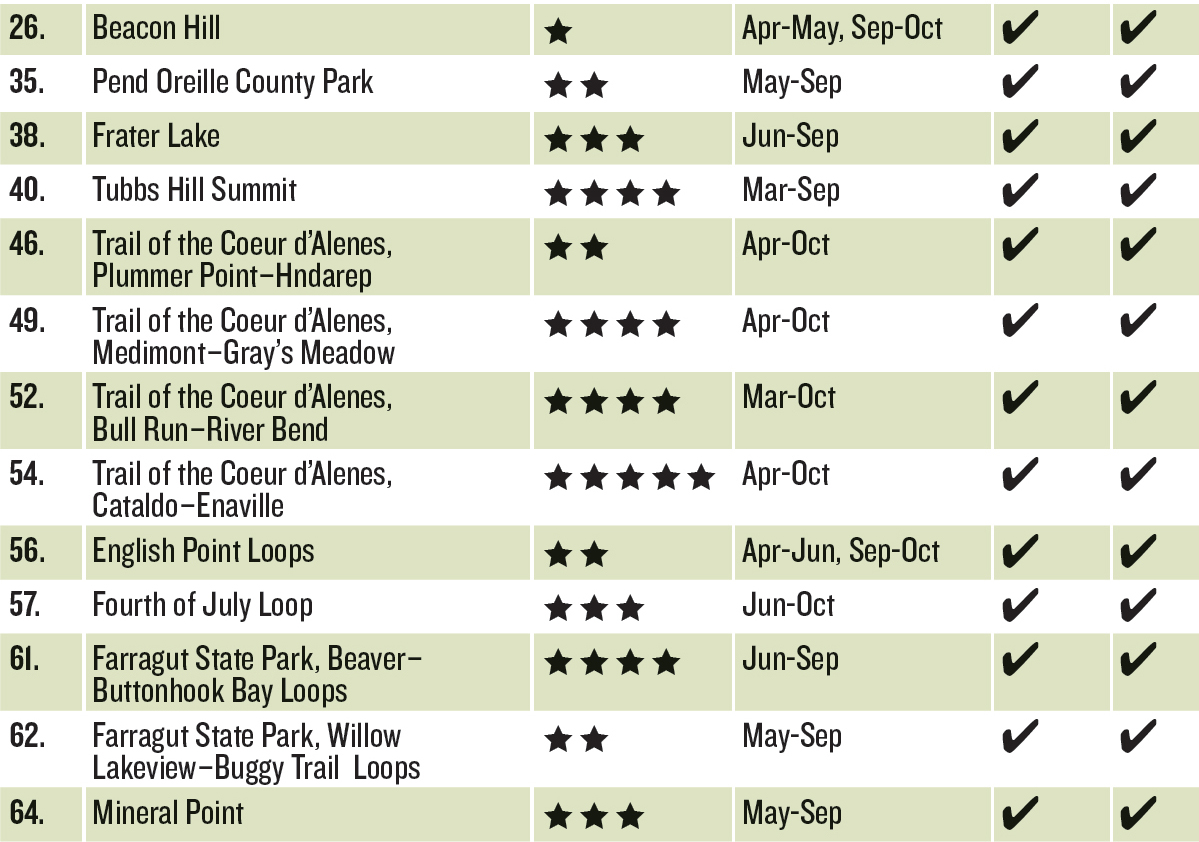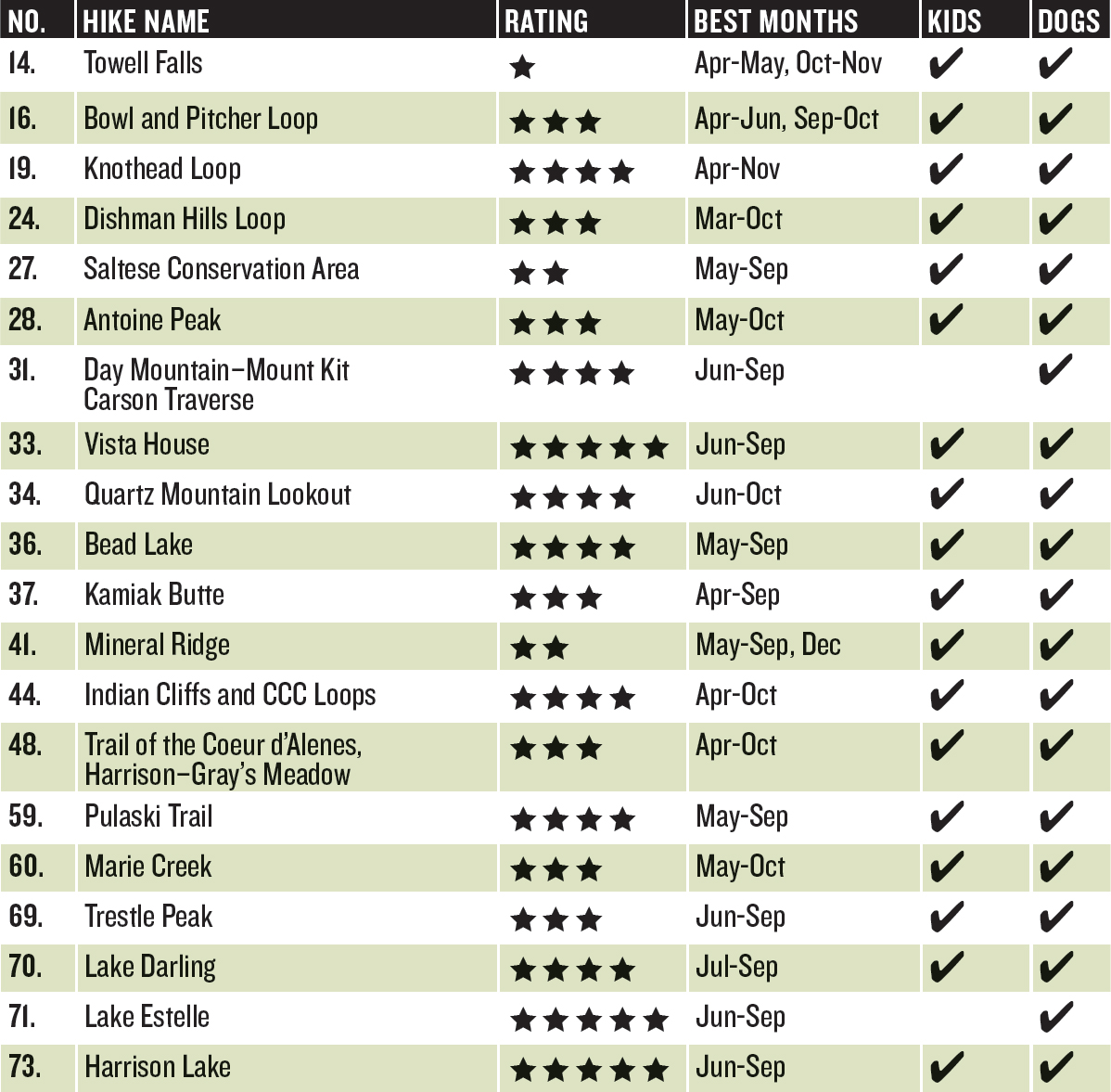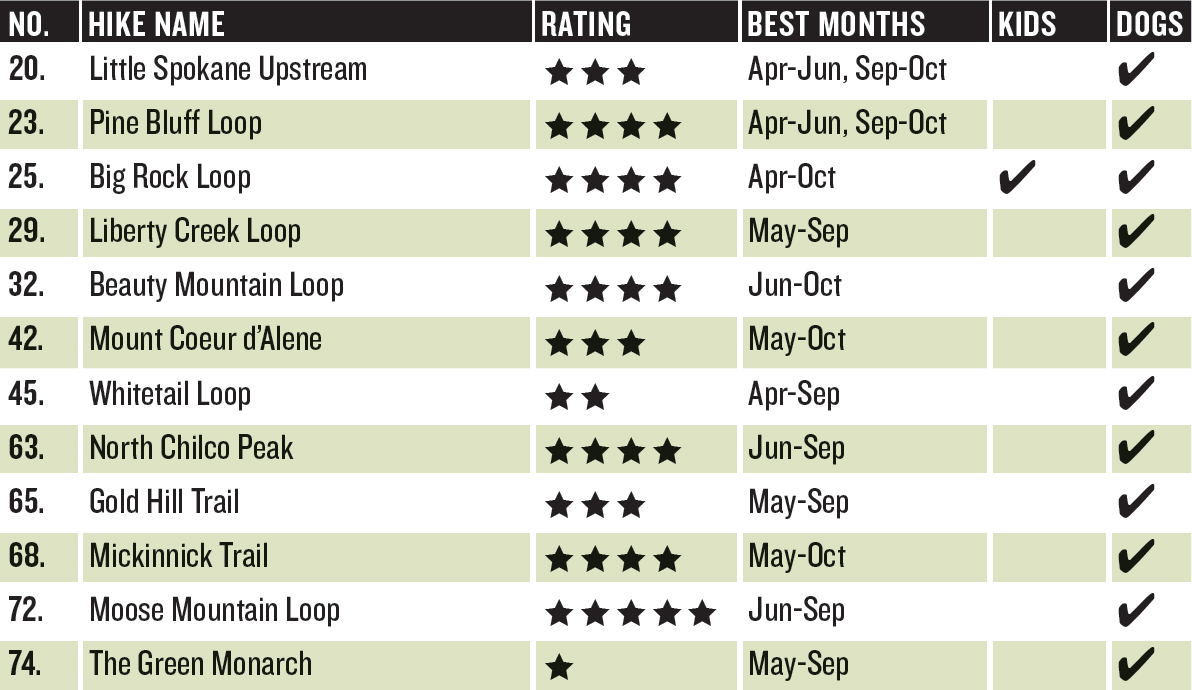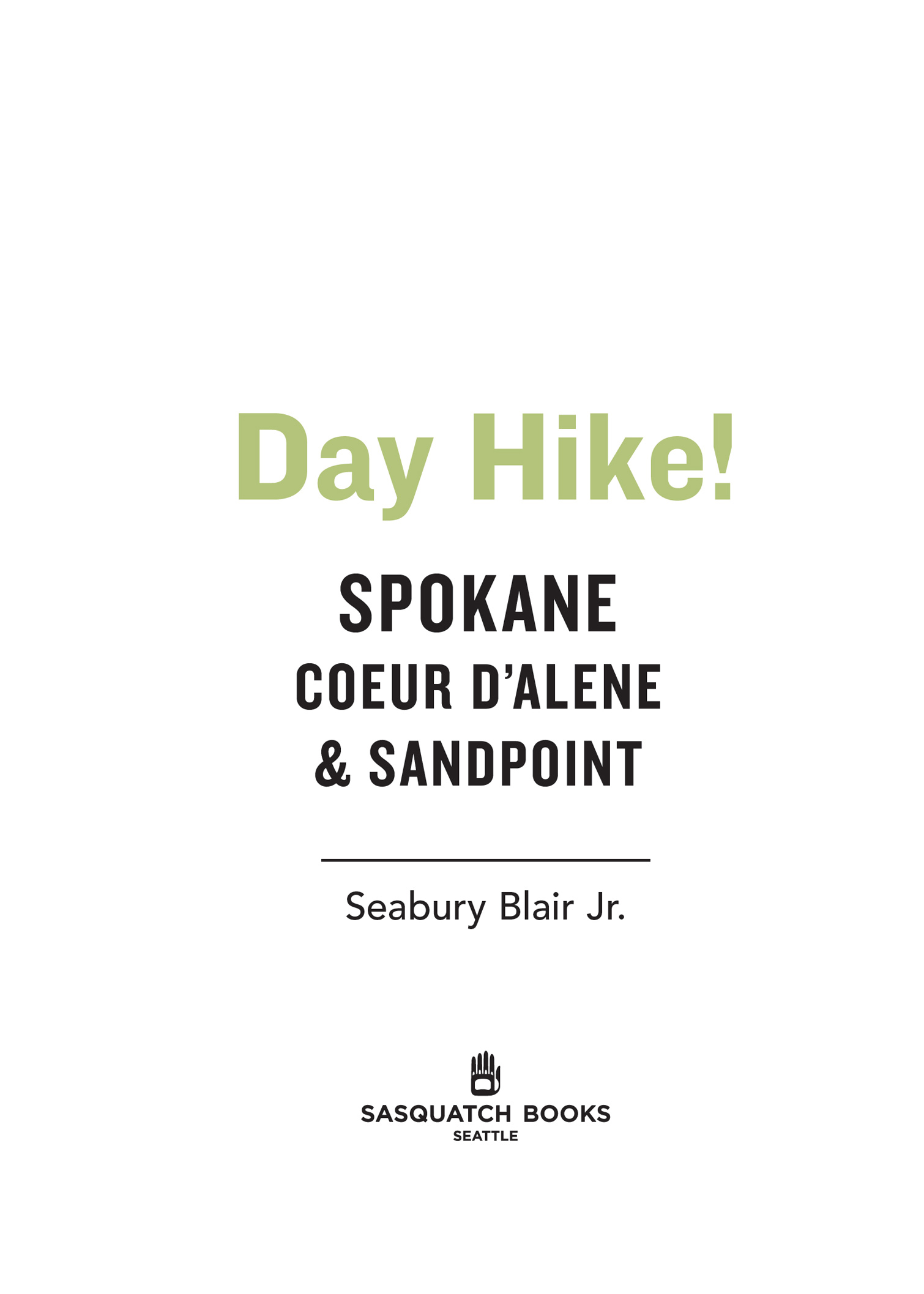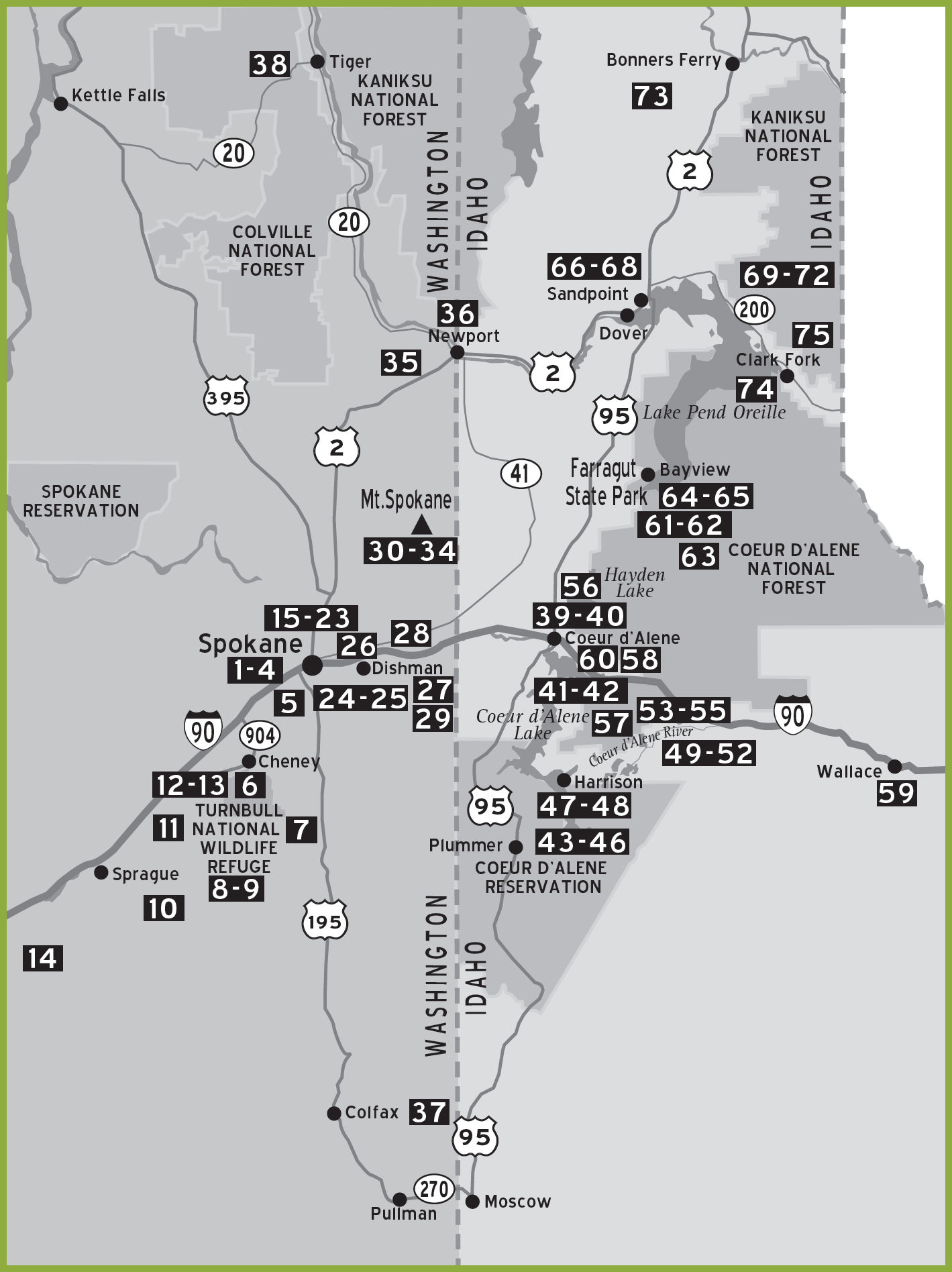Contents
HIKES AT A GLANCE
EASY
MODERATE
MODERATELY DIFFICULT
DIFFICULT
EXTREME
Copyright 2018 by Seabury Blair Jr.
All rights reserved. No portion of this book may be reproduced or utilized in any form, or by any electronic, mechanical, or other means, without the prior written permission of the publisher.
Published by Sasquatch Books
Editor: Gary Luke | Production editor: Em Gale
Cover photograph: Kim Kozlowski | Cover design: Hilary Grant
Interior photographs: Seabury Blair Jr. | Interior design: Andrew Fuller
Interior composition: Liana Lewis | Maps: Marlene Blair
Copyeditor: Rachelle Long McGhee
Library of Congress Cataloging-in-Publication Data
Names: Blair, Seabury, author.
Title: Day hike! : Spokane, Coeur dAlene, and Sandpoint / Seabury Blair Jr.
Description: Seattle, WA : Sasquatch Books, 2018. | Includes bibliographical references and index.
Identifiers: LCCN 2017041446 | ISBN 9781632171146 (paperback)
Subjects: LCSH: HikingWashington (State)Spokane RegionGuidebooks. | HikingIdahoCoeur dAlene RegionGuidebooks. | HikingIdahoSandpoint RegionGuidebooks. | Spokane Region (Wash.)Guidebooks. | Coeur dAlene Region (Idaho)Guidebooks. | Sandpoint Region (Idaho)Guidebooks. | BISAC: TRAVEL / United States / West / Pacific (AK, CA, HI, NV, OR, WA). | SPORTS & RECREATION / Hiking. | TRAVEL / Special Interest / Sports.
Classification: LCC GV199.42.W22 S645 2018 | DDC 796.5109797/772dc23
LC record available at https://lccn.loc.gov/2017041446
ISBN:9781632171146
Ebook ISBN9781632171153
IMPORTANT NOTE: Please use common sense. No guidebook can act as a substitute for experience, careful planning, the right equipment, and appropriate training. There is inherent danger in all the activities described in this book, and readers must assume full responsibility for their own actions and safety. Changing or unfavorable conditions in weather, roads, trails, snow, waterways, and so forth cannot be anticipated by the author or publisher, but should be considered by any outdoor participants. The author and publisher will not be responsible for the safety of users of this guide.
Given the potential for changes to hiking rules and regulations post-publication, please check ahead for updates on contact information, parking passes, and camping permits.
Sasquatch Books | 1904 Third Avenue, Suite 710 | Seattle, WA 98101 (206) 467-4300 | SasquatchBooks.com
v5.2
a
CONTENTS
ACKNOWLEDGMENTS
It was my wife, B. B. Hardbody, who talked me into writing this book. She convinced and cajoled me and finally got me believing I could get off the couch and away from my desk, then get into good enough shape to waddle along on the hikes described here. I was pretty much certain Id wimp out somewhere along the way, but her continuing encouragement kept me going. Id fake a limp or begin faux-panting, and shed coax me along with a few kind words, like, Get moving or Ill leave you to the vultures.
I am also extremely grateful to Gary Luke and all of the good people at Sasquatch Books who had faith that I could complete this project given the fact that I am older than the Missoula Floods. And I want to thank David Nelson, editor of the Kitsap Sun, who still finds space in his newspaper for my weekly outdoors column, as well as all three of my readers for their support.
As always, Im most appreciative of the hundreds of volunteers who keep our trails in such good condition. Thanks go to the employees of the US Forest Service and National Park Service as well, for their work in keeping our wilderness pathways open.
INTRODUCTION
Seventy-five hikes. Seventy-five days. Seventy-five years old.
I would like to tell you that weB. B. Hardbody and Itrekked all of those more than five hundred miles on consecutive days. And we might have, had I not been crippled early on by an overuse injury to my left ankle. Bad things like that happen to people who spend six months sitting on their butts trying to write entertaining and informative guides to our best Northwest trails. Then, like hibernating bears, they waddle forth in the spring and imagine they can hike eight or nine miles in three hours without suffering consequences.
Maybe they could waddle three miles an hour for three hours once upon a time, a quarter of a century ago. But not in 2016, when my wife and I traversed all of the pathways outlined on the following pages. We began in mid-April and arrived at the summit of Scotchman Peak () in early September. During that period, we gained a new perspective on natures beauty, met some interesting and friendly people, and learned valuable lessons about walking in an environment vastly different from anywhere either of us had hiked in at least five decades.
For me, it was a nostalgic half year. I revisited some of the trails I walked more than sixty years ago as one of George Libbys Iron Mena title he bestowed upon the boys who were foolish enough to follow him into the wooded hills south of Dishman or north of Hutton Settlement on cold, rainy autumn Saturdays. Libby, a portrait photographer, led weekly hikes around the Spokane area for more than forty years, ran summer camps at Liberty and Coeur dAlene Lakes, and directed National Rifle Association marksmanship classes at the old Spokane Armory for much of that time. He died in 1973 at the age of ninety-three, leaving generations of Spokane youth with a greater appreciation and knowledge of the great outdoors.
Ive spent most of my adult life day hiking, backpacking, and skiing in Washingtons Cascade and Olympic Mountains, with vacation backpacks and treks around Northwest national parks and forests in Alaska, Montana, Oregon, British Columbia, and Alberta. I mostly cut my day-hiking chops in Olympic National Park and Forest, largely because for the first couple decades of my working life, I was unable to wrangle two consecutive days off. Id drive to trailheads at night, camp, and trek as far as my legs would take me in a day. Many times, that turned out to be twenty miles or more. It was a blessing in disguise because on most weekday hikes, I had the wilderness all to myself and my hiking partner. Meeting another wildland pedestrian was a rarity, even at a time when hiking and backpacking were trending. The same lack of pedestrian company was true in the Olympic and Mount Rainier National Park winters, when I took up backcountry skiing in the early 1970s.








